Social Network Google Reader Clone Trying to Be Funny
If you're creating a social media marketing strategy and need to figure out what each social network can do to help you reach your target audience, read on. This is a complete overview of 20 of the biggest and most popular social media apps in the world.
A note about sources in this article: Monthly active user numbers are from Statista and Hootsuite's Digital 2021 April Update, but also confirmed and updated with the platforms themselves, as necessary.
And so, we present to you, in order from largest to smallest (but certainly not in order of hype or value), all the social media sites.
Bonus: Get a free social media strategy template to quickly and easily plan your own strategy. Also use it to track results and present the plan to your boss, teammates, and clients.

Monthly active users: 2.8 billion
Facebook is not only the world's largest social network, it's also the most developed channel for organic and paid social marketing. 18.2% of adults in the US made a purchase through Facebook last year.
People use Facebook to keep up with friends, family, and news using various forms of shared content (everything from written updates to live video and ephemeral Facebook Stories.)
Brands who maintain a presence on the platform might use organic content for brand awareness, and/or relationship nurturing through social customer service. Marketers can also tap Facebook's user data to reach new customers with relevant advertising.
Most recently, Facebook is prioritizing e-commerce shopping via Facebook Shops.
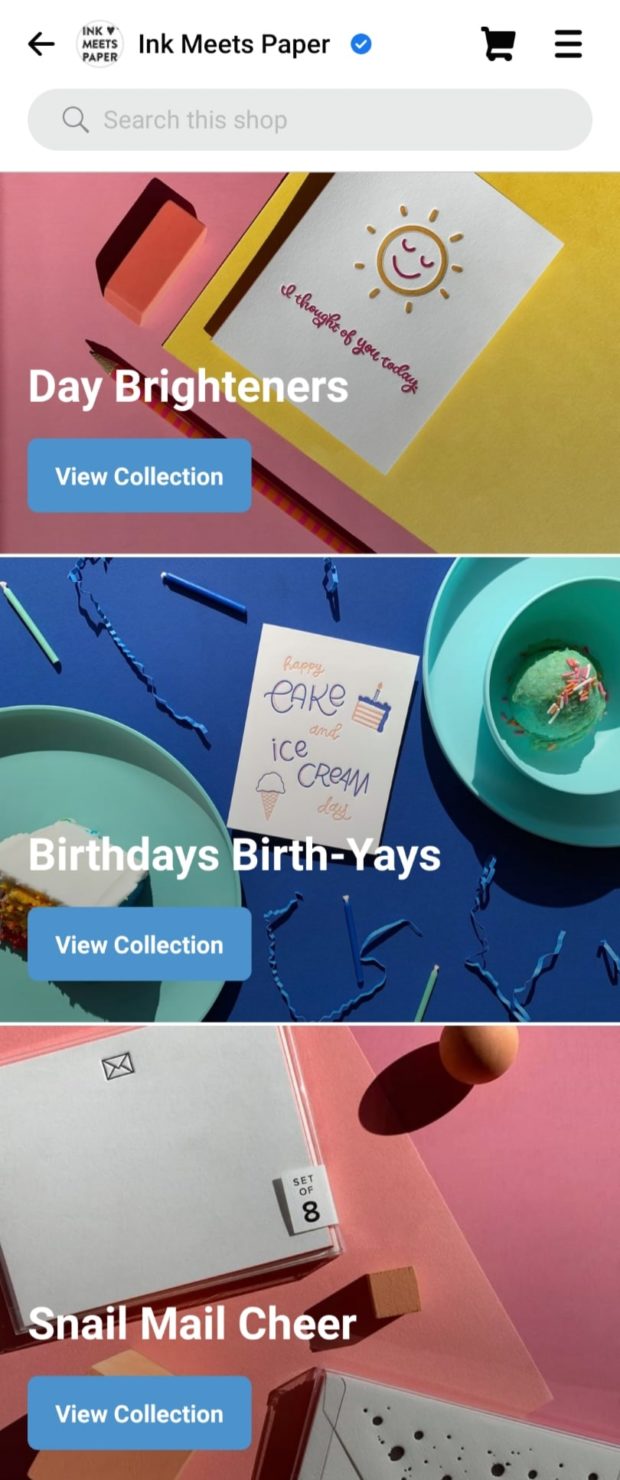
Source: Ink Meets Paper
Want more detail? Our complete introduction to Facebook marketing is over here.

YouTube
Monthly active users: 2.29 billion
YouTube isn't always thought of as one of the world's social media apps. You could just as easily call it a video platform, or the world's second-largest search engine.
For established brands with big-gun marketing agencies, YouTube ads running before or in the middle of original videos aren't a huge stretch from what you'd run on TV. Meanwhile, for brands building their own youTube channel by posting original videos, it's important to play nice with the YouTube algorithm, which takes some combination of skill, strategy, budget, and luck. But there is potential pay-off there, too: 70% of viewers have bought from a brand after seeing it on YouTube.
In short, because YouTube is video (usually long-form video) the barrier to entry is a little bit higher for DIY marketers, who will benefit from time, money, and talent (or preferably all three).
Learn more about what it takes to succeed on YouTube in our intro to YouTube marketing.

Monthly active users: 2.0 billion
WhatsApp is the #3 social app on the list by user base, but it's the #1 messaging app in the world. In fact, it was recently voted to be the world's favourite social media app (though the survey excluded users in China.)
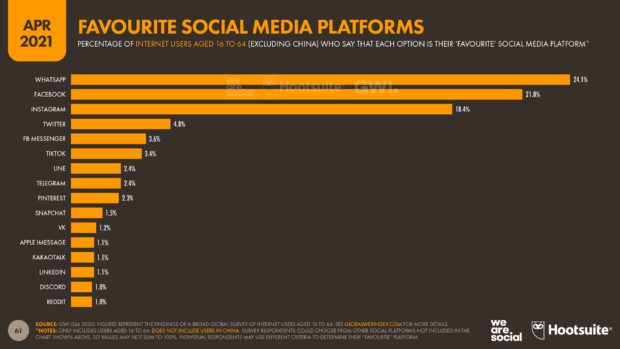
Source: Digital 2021 April Global Statshot Report
This might be news to a lot of North Americans, but WhatsApp is one of the world's foremost social media apps.
Facebook purchased WhatsApp in 2014 for $19 billion, and it has remained, more or less, a straight-up messaging and calling app. (And ad-free, unlike Facebook Messenger.)
Every day, 175 million users in 180 countries message one of the 50 million businesses on WhatsApp.
For those businesses, WhatsApp's most appealing functions include streamlining customer service conversations and showcasing products in a catalog (essentially a digital storefront akin to Facebook Shop, though users must still leave the app to make purchases).
However, Facebook recently announced that brands using WhatsApp Business App will be able to more easily create Facebook and Instagram ads that allow users to "click to WhatsApp" in order to initiate conversations on the app.
For brands whose customers are already on the app, using WhatsApp for business may well make sense.
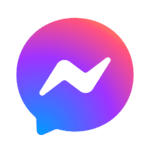
Facebook Messenger
Monthly active users: 1.3 billion
Next up is Messenger: the other private messaging app owned by Facebook. Part of Facebook's ongoing strategy to prioritize private messaging, Facebook Messenger differs in a few key ways from WhatsApp:
- it doesn't offer end-to-end encryption to users
- it does serve a variety of ads (including sponsored messages, inbox ads, etc.)
- it also links all of a user's contacts from both Instagram and Facebook.
In 2019, a Facebook poll found that 64% of people expect to be able to message brands for customer service.
Messenger features like automatic replies, greetings and away messages can help make customer relationships more efficient. For some brands, a more complicated proposition like building a Facebook Messenger bot makes sense.
Here's our full guide to Facebook Messenger for brands.
Pro Tip: Given the variety of messaging apps out there, compiling all your cross-platform DMs and comments into one inbox is helpful (take, for instance, Hootsuite Inbox.)

Monthly active users: 1.22 billion
Rounding out the top five social media sites by population is another Facebook property: Instagram.
Formerly a humble photo-sharing app, over the past few years Instagram has become one of the world's most important social media apps in regards to social commerce. Alongside astrology memes and latte art, Instagram's become a virtual shopping mall, with a plethora of features designed to help businesses sell products—preferably beautiful ones.
While the importance of a polished feed has shifted with the rise of ephemeral, live, and video content (a.k.a. Stories, Reels, Instagram Live, and IGTV), brands should keep in mind that a strong visual identity is always key on Instagram.
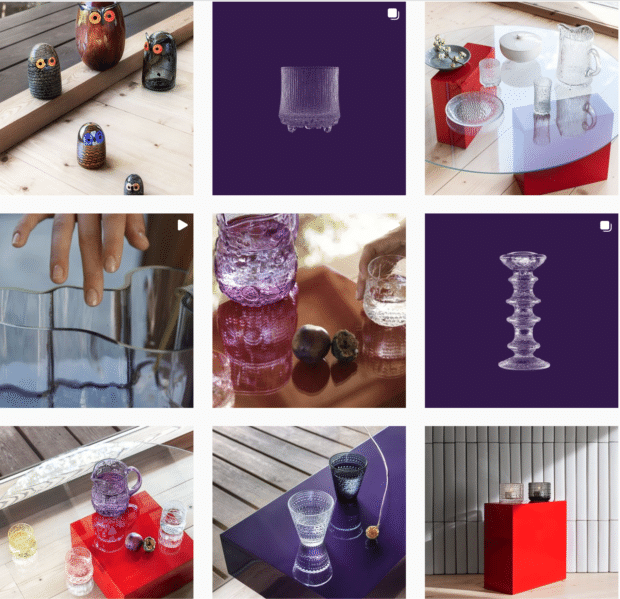
Source: @iittala
Consumer brands especially should take note of Instagram for its shoppable posts and Stories, as well as its powerful back-end for targeted ads.
The platform demands as much art as science, so start with our step-by-step guide to Instagram marketing here.

Monthly active users: 1.22 billion
The first non-North American app on this list is Tencent's WeChat (or Weixin, in China). Because American social media sites are restricted in China, the country has its own flourishing social ecology.
WeChat is the dominant social network in China, but this super social media app goes beyond messaging. Users can message, video call, shop using WeChat Pay, use government services, call rideshares, play games—you name it. According to one survey, 73% of respondents in China had used WeChat in the past month.
In late 2020, 88% of American businesses doing business in China said that Donald Trump's plan to ban WeChat would have a negative impact on their operations, and 42% predicted they'd lose revenue if the ban went through. (It didn't.)
For businesses looking to expand their efforts in China, looking into WeChat marketing—whether that's advertising, influencer campaigns, in-app e-commerce, or building out a mini-app within WeChat—will be an important step.
Pro Tip: Hootsuite's WeChat app will help you integrate your WeChat strategy into your team's daily workflow.

Members: 756 million
First, let us note that LinkedIn hasn't reported monthly or daily active users (just the number of accounts—a potentially vastly different number) since Microsoft bought it in 2016. So while it's listed at number 7, in reality, its active user numbers may well be a lot closer to the bottom of this list.
That said, LinkedIn has been a bit of a dark horse social platform these past few years. It has experienced rising popularity as users and brands have realized that the only social media site dedicated to professionals is more than just a job board.
More than half of marketers say they're planning to use LinkedIn in 2021.
For brands with a professional audience—especially B2B marketers focused on lead generation—a LinkedIn marketing strategy is key.
Organic content, including LinkedIn Live and the platform's new product pages, is increasingly big on LinkedIn, with 96% of B2B marketers reporting that they use these features. Likewise, 80% report they use LinkedIn ads, which include sponsored direct messages.


TikTok
Monthly active users: 689 million
TikTok is inarguably one of the buzziest social media apps on this list. It's notable for its explosive growth, as it has only been around since 2017. Yet it was the #1 top-downloaded app in 2020.
TikTok is a short-video sharing platform with a uniquely addictive algorithm. It holds a lot of sway with teenagers and Gen Z.
For instance, it outpaced Instagram as American teenagers' second-favourite social platform in fall 2020, and now it's closing in on Snapchat for #1.
For brands, TikTok can be the source of some confusion and intimidation. What kind of videos should you post? Do TikTok ads have to be funny? How do you work with TikTok influencers?
@charlidamelio my @dunkin obsession…but make it merch!! coming tomorrow 3/30, 3pm est🧡 shopdunkin.com #ad
♬ original sound – charli d'amelio
Rest assured, if the Washington Post can do it, so can you. Start with our guide to TikTok marketing.

Douyin
Monthly active users: 600 million
Before Chinese tech giant ByteDance created TikTok, it created Douyin. Impressively, the Chinese version of the short video app is almost as popular as the international version, in terms of user numbers alone.
Brands with a vested interest in reaching youth in China will want to consider adding it to their stable of social media apps.

Monthly active users: 595 million
Designed as an answer to Israel's ICQ in 1999, in 2021 QQ remains China's second most-popular messaging app.
Both QQ and WeChat are owned by tech giant Tencent, but while WeChat has gained dominance, QQ has spent the last few years dropping in popularity. (Users peaked at 760 million in 2019, according to Statista.)
QQ offers voice and text messaging (including translation), video and audio calling, a well-developed groups feature, as well as expanded interactive features around games, music, and shopping.
Marketers should keep in mind that QQ's desktop and mobile messaging attracts a consistently younger demographic than WeChat. And with granular advertising options and in-app e-commerce, it's a fully developed channel.
Successful marketing campaigns often integrate QQ with QZone (see #14.)
Bonus: Get a free social media strategy template to quickly and easily plan your own strategy. Also use it to track results and present the plan to your boss, teammates, and clients.
Get the template now!
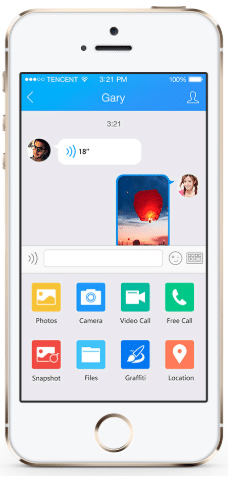
Source: QQ International

Sina Weibo
Monthly active users: 511 million
China's answer to Twitter, Weibo (as it is usually known) is the oldest and largest micro-blogging platform in China.
It has outlasted domestic competitors (including a clone from Tencent) and surpassed Twitter in users, revenue, and innovation (it dropped the 140 character limit and introduced photo carousels and video earlier).
Marketers will be pleased to find a powerful advertising back-end, established influencer channels, as well as a native lottery (a.k.a. contest) feature.
Pro Tip: Hootsuite users can easily oversee their Sina Weibo accounts from the Hootsuite dashboard using our Sina Weibo app for Hootsuite.

Telegram
Monthly active users: 500 million
Telegram is a messaging app that allows large group chats (up to 200,000 people) and public one-to-many channels—which gives it more of a social spin.
Founded in 2013 by the founders of Russian social media platform VK, Telegram bills itself as a more privacy-focused alternative to Facebook's WhatsApp or Facebook Messenger.
(Though some security experts would disagree, pointing privacy-conscious users towards not-for-profit Signal, instead.)
As far as monetization goes, Telegram has announced it will soon introduce an ad platform for public channels. In the meantime, enterprising brands have been building audience relationships there for a while already. Organic awareness efforts via chatbots, groups and broadcast channels can be quite effective.

Snapchat
Monthly active users: 498 million
This camera-first, disappearing content app has been around since 2011. Owned by Snap, a company that's independent of the Facebook empire, Snapchat's Stories are a popular format that have been repeatedly cloned by competitors.
Nonetheless, Snapchat's user base is not only youthful but also loyal: 82% of its users are under 34, and it remains the most popular app for teens (though TikTok is now breathing down its neck, see #8).
Brands who care about earning attention from Gen Z (and, soon enough, generation Alpha) are definitely going to want to check this platform out. Start with our overview of SnapChat for business and SnapChat ads.

Source: Dr Julie Smith

QZone
User base: 496 million users
QZone is another of Tencent's properties, and an estimated 97% (481.9 million) of its users are in China.
With a user base that is closely intertwined with messaging service QQ (see #10), Qzone offers a fully customizable personal space (think MySpace, but users pay for those cool backgrounds) for people to share photos, blog posts, music, and videos.
Brands participate organically by forming their own profiles, and ads via Tencent's ad platform are also available.


Kuaishou (a.k.a. Kwai)
Monthly active users: 481 million
Kouaishou (or Kwai, outside of China) is known primarily as a Chinese short-video platform that's funded by Tencent and competes with TikTok/Douyin. But Kouaishou has also carved out its own niche in a subset of social commerce that hasn't yet hit peak popularity in the West: live commerce.
Livestreaming is highly popular on Kwai, as is social gifting. Kwai allows users to send virtual gifts to their favourite influencers, as well as buy products in-app from those influencers as they livestream. International brands like Volkswagen, the NBA and Cristiano Ronaldo are all active on the platform.

Source: Mailman

Monthly active users: 442 million
Pinterest—the digital vision board app—has been experiencing notable user growth through the pandemic. For instance, their popularity outside of America was up 46% in 2020.
Pinterest has a reputation as a positive, apolitical, moderated space for brands to advertise to people planning out life events. 92% of advertisers on Pinterest agree that it has the most positive reputation of any social media app.
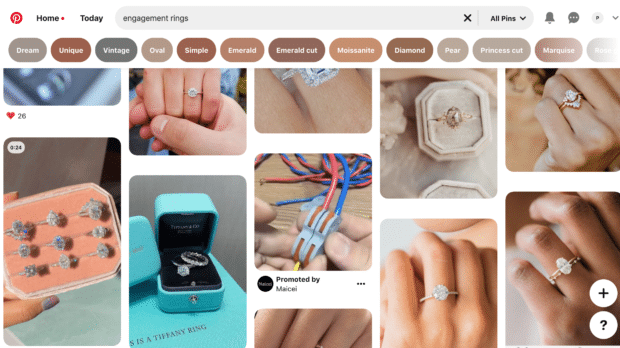
Advertising on Pinterest, as with most of the other platforms on this list, is headed towards e-commerce. Shoppable ads are now on the menu in select countries in Europe and North America.
Here's a longer overview on using Pinterest for business.

Montly active users: 430 million
Reddit—the web board platform owned by Conde Nast—was founded in 2005. Lately it has been making moves (buying TikTok competitor Dubsmash and rolling out new features) as well as seeing daily usage grow 44% year over year.
Most marketers will probably be able to find at least one subreddit (i.e., a niche online community devoted to a specific topic, like gaming or stock-picking) that attracts your brand's target audience. However, this is not a platform for a hard sell, branded content, or even influencer marketing. (After all, this is the platform responsible for the New York Stock Exchange halting trading 9 times in one day.)
Ads are available, of course, but honouring the tone of Reddit is helpful.

Pro Tip: Brands can keep an ear to the ground by using Hootsuite's Reddit app, which will monitor and track activity around your keywords or preferred subreddits.

Monthly active users: 353 million
Given its fairly small user base, Twitter has impressive name recognition—90% of Americans have heard of Twitter, though only 21% use it. That, combined with an active population of politicians, journalists, celebrities, and comedians, keeps the platform punching above its weight, especially in North America (and Japan, where it's the #1 platform.)
How can brands use Twitter? Organic Twitter marketing will depend on your brand voice, but there's plenty of room for personality (American fast food brands regularly bicker with each other).
Customer service is also an important opportunity. And of course, Twitter offers an ad platform for brands to target their audiences.

Quora
Monthly active users: 300 million
This question and answer website was founded in 2009 by two former Facebook employees. Whether you use Quora or not, you may recognize this platform from its eerily high position in the SERPs.

Quora aims to be very brand-friendly, and offers plenty of advertising options including "promoted answers." There are also plenty of opportunities for sharing content (repurposing blog posts, for instance) and thought leadership.

VKontakte
Registered users: 72 million
Russia's Facebook clone is known as VK. Founded in 2007 by Pavel Durov (who is now running Telegram (see #12), only YouTube is more popular in Russia.
Most of VK's users are millennials, and Statista estimates that half of them live in St Petersburg.
For brands marketing to Russian speakers, VK is key for the whole online sales funnel: everything from brand awareness to e-commerce.
Pro Tip: To learn about more non-English social platforms, read our list here.

Clubhouse
Weekly active users: 10 million
Clubhouse may be the smallest, but it's also the newest social media app on this list. Launched on the App Store in September 2020, the app's founders have been pumping the brakes on growth: new users currently need both an invite code and an Apple device to join.
With a slow-growth framework in mind, 10 million users becomes fairly impressive.
So what is it? Clubhouse is a live, ephemeral, drop-in audio chat app. At its best, it's something like a conference call featuring your favourite talking heads. There are no ads, and not a lot of room for organic content from brands.
So far brands that have explored the space are sticking mostly to influencer marketing—sponsoring a conversation, essentially.
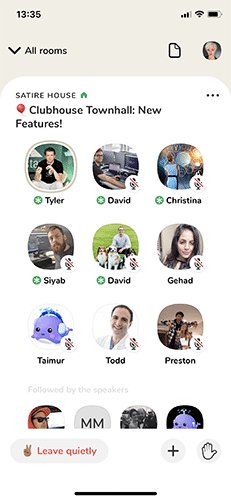
Want to know more? Read our overview of what marketers need to know about Clubhouse, and what marketers actually think about Clubhouse.
Hootsuite
Most businesses use more than one social media site to market their brand. Hootsuite is a social media management platform that lets you to create, schedule, and publish messages to all the major social networks from one dashboard. You can also:
- edit and automatically resize images according to each network's unique specs
- measure your performance across networks
- moderate comments and respond to customer service requests
- streams to monitor mentions of your brand
- and more!
It will save you time and level up your social media marketing efforts.
Watch the video below to see how Hootsuite works.
Ready to manage all your social media apps in one place? Try the tool trusted by thousands of social pros free or request a demo today.
Try Hootsuite for Free
Do it better with Hootsuite, the all-in-one social media toolkit.Stay on top of things, grow, and beat the competition.
Free 30-Day Trial (risk-free!)
Source: https://blog.hootsuite.com/best-social-media-apps-list/
0 Response to "Social Network Google Reader Clone Trying to Be Funny"
Post a Comment